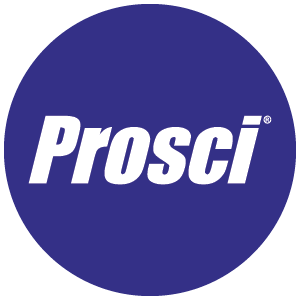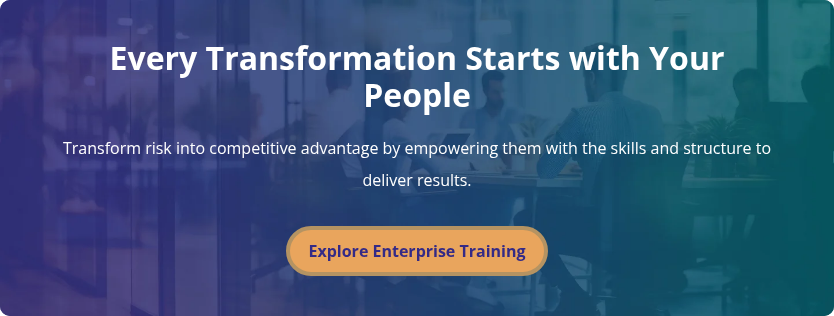How to Use a Stakeholder Engagement Plan (SEP)

7 Mins
Updated: October 17, 2025
Published: February 3, 2025

In the world of change management, successfully rolling out new initiatives requires putting people into a position where they can embrace and adopt them. Too often, change managers focus on planning and training but overlook a crucial aspect of their role: stakeholder engagement.
All stakeholders, from executives and employees to customers and external partners, can influence whether a change initiative thrives or falters. Their concerns, level of influence, and willingness to adapt to change directly impact how smoothly an organization transitions from the current state to the desired future state.
Yet, simply identifying stakeholders isn’t enough. Without structured stakeholder engagement planning, even the most well-intentioned initiatives experience resistance, miscommunication and misalignment, putting it at risk. Organizations that proactively plan for engagement are better positioned to build trust, foster collaboration, and increase the likelihood of enabling people to adopt changes successfully.
What Is a Stakeholder Engagement Plan?
A stakeholder engagement plan (SEP) is a structured approach to identifying and analyzing stakeholders and involving them throughout a project or change initiative. It ensures that stakeholders receive timely communication, feel heard, and remain aligned with project goals. A stakeholder engagement helps organizations:
- Clearly identify everyone, determine who is impacted, and understand their level of influence.
- Foster transparency and dedication through open communication and the appropriate level of engagement.
- Address concerns proactively to create a supportive environment.
- Leverage stakeholder insights for informed strategic choices.
- Align stakeholder needs with project objectives to drive success.
What Is the Role of Stakeholder Engagement in Change Management?
A stakeholder engagement plan ensures that individuals impacted by change stay informed, involved and supported throughout the transition. Change initiatives often succeed or fail based on how well they are received by the people they impact. If those affected feel excluded or uncertain about how the change benefits them, they are more likely to exhibit resistance behaviors. When that happens, people become disengaged and less productive.
The Prosci ADKAR® Model provides a framework that change managers can use to align stakeholder engagement strategies with how people experience change. In a change initiative, ADKAR guides affected people through the process so they can fully understand and embrace the change. This helps organizations secure commitment and investment, and ultimately improve adoption.
Create a Stakeholder Engagement Plan
A well-thought-out stakeholder engagement plan makes it easier for organizations to manage relationships effectively throughout a project or change initiative. It identifies stakeholders, analyzes their influence, develops strategies to manage their expectations and bring them along during the change process, and details how ongoing interactions will be monitored.
Let’s take a closer look at the basic areas involved when creating your stakeholder engagement plan:
Identifying stakeholders
The first step is to identify all individuals and stakeholder groups impacted by the change. Your list of stakeholders can include those who are internal (executives, employees, project managers, project teams) or external (customers, investors, regulatory bodies, suppliers).
Stakeholder analysis
Some stakeholders have significant decision-making authority. Others may have lower influence but a high level of interest that keeps them highly invested in the change. Having a stakeholder map that outlines stakeholders based on their interest and authority determines who requires close engagement versus those who only need occasional updates.
Engagement strategies
Stakeholder communication needs to be relevant and timely, and provide opportunities for input throughout the change process. Effective communication is tailored to each group’s needs. Using preferred channels and formats when you communicate with stakeholders will help you maintain clarity and transparency.
Create other engagement activities to encourage stakeholders to participate in discussions and decision-making. This fosters a sense of ownership and investment in the change.
Monitoring, feedback and evaluation
The ADKAR Model provides a useful framework for diagnosing where engagement efforts are succeeding or where stakeholders may be stuck. For example:
- If stakeholders lack Awareness, communication efforts may need to be revisited.
- If stakeholders lack Desire, leadership may need to address concerns and clarify benefits.
- If stakeholders lack Knowledge, training programs may need to be strengthened.
- If stakeholders lack Ability, more hands-on guidance or resources may be required.
- If stakeholders lack Reinforcement, additional engagement strategies may be necessary to sustain adoption.
Prosci ADKAR Model
 What does the plan include?
What does the plan include?
A stakeholder engagement plan should include:
- An overview of key stakeholders, their expectations, and their role in the change initiative.
- The specific methods and communication approaches used to maintain stakeholder involvement.
- Metrics and processes for assessing stakeholder engagement levels and making necessary adjustments.
SEP Change Management vs. SEP Project Management
What’s the difference between stakeholder engagement planning for change management and project management? The approaches are quite similar but influence your project and people in different areas:
SEP for Change Management – Enables project success by addressing the people side of change. It aims to engage stakeholders in the transition process, ensuring they understand and adopt the change. The plan addresses emotional responses to change and the need for communication and training. And it involves strategies for engaging stakeholders in a way that encourages participation and minimizes resistance behaviors.
SEP for Project Management – Influences your project on the technical side of the change. This includes managing stakeholder expectations about project progress, timelines and resource allocation. A key focus is aligning stakeholder expectations with project goals and deliverables.
The image below depicts Prosci’s Unified Value Proposition—a simplified view of how change management and project management work together to achieve a common goal of project success.
Unified Value Proposition

Key Challenges in Stakeholder Engagement
Change management is inherently complex because it requires individuals to shift behaviors, adopt new processes, and often rethink long-held ways of working. Below are some of the most common obstacles and their potential impact on change initiatives.
Resistance to change
A survey found that 29% of participants do not feel included when change is happening in their organization. This lack of inclusion can foster skepticism, disengagement, and even active resistance. Additionally, stakeholders may resist change because they’re afraid of the unknown, feel like they have no control, or have had negative experiences in the past.
The top reason for resistance is a lack of awareness about the need for change and why it will benefit the people impacted. Without a clear understanding of why a change is happening, stakeholders are more likely to push back, making engagement efforts more difficult.
Lack of trust
A history of poor communication or unmet expectations can erode trust and hinder collaboration. If stakeholders feel that their input is ignored or that past initiatives have failed to deliver promised benefits, skepticism can grow.
Underestimating the emotional toll of change
Change is often deeply personal, and businesses that treat it as merely operational put themselves at a disadvantage. Employees don’t process change logically. They experience it emotionally. The Kubler-Ross Model, commonly known as the five stages of grief, offers a valuable understanding of how people respond to change and can be used alongside ADKAR to guide employees through their transition with targeted support.
Poor communication
Messages that are unclear, fail to address stakeholder concerns, or are delivered through inappropriate channels can create confusion, frustration, and disengagement among stakeholders. They need to understand the why, what, and how of the change, yet many organizations fail to provide consistent, clear messaging.
Sustaining engagement over the life of a project
Even when initial enthusiasm is high, engagement can wane over time, particularly for long-term change initiatives. Employees may lose interest if they don’t see progress, or they may shift focus to competing priorities.
How to Overcome Challenges in Stakeholder Engagement
Here are key strategies to overcome stakeholder engagement challenges:
Develop a stakeholder engagement plan
A well-structured stakeholder engagement plan is essential for identifying, analyzing, and engaging key stakeholders throughout a project or change initiative. It moves stakeholders through the ADKAR Model and helps ensure:
- Awareness is built early through clear, transparent communication.
- Desire is created by helping stakeholders understand personal and organizational benefits.
- Knowledge is developed through training, mentorship, and practical resources.
- Ability is supported by enabling people to apply and practice relevant skills.
- Reinforcement keeps stakeholders engaged long after the initial rollout.
Communicate regularly
Maintaining stakeholder trust and attention requires open, consistent communication. Using multiple channels, such as email, meetings, digital platforms and informal discussions, allows stakeholders to receive updates in ways that work best for them.
Messaging should be tailored to address specific concerns, providing clear insights into how the change affects them. Regular progress updates manage expectations, while opportunities for two-way dialogue allow stakeholders to ask questions, share feedback, and stay actively engaged.
Build relationships
Trust is the foundation of successful stakeholder engagement. Strengthening relationships with stakeholders requires acknowledging stakeholders’ concerns and demonstrating a genuine commitment to addressing them.
You can do this by scheduling check-ins, seeking their input, and involve them in discussions. Also, follow through on your commitments to them to build credibility and confidence in relationships. This will improve collaboration and their willingness to engage with and support change initiatives.
Involve stakeholders in decision-making
Stakeholders who feel included in the decision-making process are more likely to support and adopt changes. Seek their input early and often, and encourage participation in discussions that impact their roles, responsibilities, or areas of influence. You want to allow stakeholders to contribute ideas, offer solutions, and take ownership of initiatives.
Stakeholder Engagement Plan vs. Communications Plan
Stakeholder engagement and communication are often used interchangeably, but they serve distinct roles in managing change. A stakeholder engagement plan is a broader strategy focused on building relationships and fostering participation, while a communications plan outlines how messages will be delivered to keep stakeholders informed.
Although they are distinct, these plans work together. Stakeholder engagement informs communication strategies by identifying key players and their needs. Effective communication strengthens engagement by building trust and reducing resistance.
Together, they enhance collaboration, ensuring stakeholders remain informed, involved and aligned throughout the project.
Stakeholder Engagement Plan vs. Stakeholder Register
A stakeholder engagement plan and a stakeholder register serve complementary but different roles in project management. The stakeholder register is a foundational document that identifies stakeholders, categorizes their level of influence and interest, and captures key details such as communication preferences and potential risks.
In contrast, the stakeholder engagement plan builds on this by defining strategies for interacting with stakeholders, ensuring their involvement, and maintaining alignment with project goals.
While the register helps project teams understand who their stakeholders are, the engagement plan outlines how to effectively communicate and collaborate with them throughout the project lifecycle. Together, these tools provide a deliberate, proactive approach to stakeholder management.
How the Prosci Methodology Elevates Stakeholder Engagement
A stakeholder engagement plan ensures those who need to be involved in supporting a change take an active role. When done well, stakeholder engagement becomes a driving force behind successful change initiatives. Prosci engages stakeholders as part of the Prosci 3-Phase Process, which incorporates the ADKAR Model.
 Here are some examples of how the process makes stakeholder engagement proactive, personalized and sustainable:
Here are some examples of how the process makes stakeholder engagement proactive, personalized and sustainable:
Phase 1 – Prepare Approach
In this phase, stakeholders are engaged by collaboratively defining success and the impact of the change, ensuring alignment and commitment through a comprehensive Change Management Strategy.
Phase 2 – Manage Change
During this major phase of change management, stakeholders are actively involved in the development and implementation of plans to support their transition. This phase also involves engaging people with ongoing communication and feedback mechanisms to track progress and adapt actions as needed.
Phase 3 – Sustain Outcomes
In the final phase, stakeholder engagement continues by enabling affected people to participate. They might work with managers to review performance and develop strategies to sustain the change. This helps ensure their ownership and commitment to the long-term success of the initiative.
Engage Stakeholders With Change Done Right
At its core, change is about people, and achieving sustainable transformation requires more than implementing new systems or processes. "Change Done Right" means aligning creating an environment where change can be embraces without barriers that hold people back. The Prosci Methodology is proven to build trust, foster resilience, and ensure that change is truly adopted, not just implemented.




